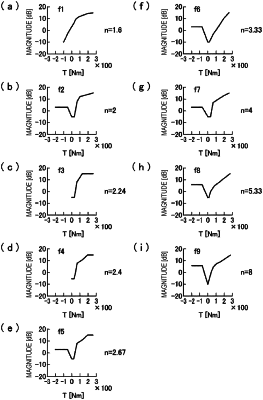| CPC B60Q 9/00 (2013.01) [G10K 15/02 (2013.01); H04R 2499/13 (2013.01)] | 20 Claims |

|
1. A sound generation device, the sound generation device being installed in a vehicle which travels using an electric-powered motor as a power source, the sound generation device comprising:
a processor configured to set a plurality of frequencies corresponding to a motor rotation speed of the electric-powered motor and generate a synthetic sound signal indicating a synthetic sound including sounds at the plurality of frequencies; and
a speaker configured to output the synthetic sound based on the synthetic sound signal, wherein
the processor sets an increase amount of an output of a sound in a low frequency band large compared to an increase amount of an output of a sound in a high frequency band in a frequency range of the synthetic sound in accordance with an increase in a motor torque value of the electric-powered motor; and
responsive to determining that the motor torque value exceeds a predetermined value, the increase amount of the output of the sound in the low frequency band is decreased.
|